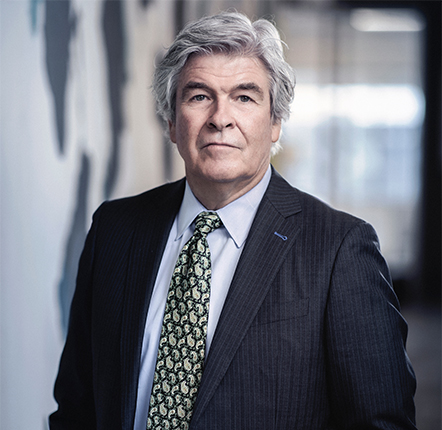John Taylor and Robert Clayton Secure $7.83M Settlement in Fatal Car Chase Case

John Taylor and Robert Clayton, partners at Taylor & Ring, obtained a $7.83 million settlement on behalf of clients whose son died during a civilian car chase. Julie and Jesse Esphorst, Sr., filed wrongful death lawsuits against the city, county, and California Department of Transportation. John and Rob represented Julie in her claims.
In 2017, Tung Ming’s car was struck by Darryl Leander Hicks. Hicks fled the scene, and Ming took after him, calling 911 in the process. The Los Angeles Times reports:
As Ming followed Hicks, he called 911 to report the incident. According to the lawsuits, [911 dispatcher Jessica Lynn] Lindsay told Ming to get the license plate number of the car that had struck him. Because she repeatedly instructed him to get the fleeing vehicle’s plate number, Ming said in a deposition, he thought she was commanding him to drive faster.
Jesse and his father were returning from a baseball game when their van was struck — first by Hicks’ vehicle and then by Ming’s — as it turned on a green light at the intersection of Crenshaw Boulevard and Crest Road in Torrance.
Both Jesse and his father were seriously hurt. Jesse died of his injuries that night at a hospital.
Per the LA Times, the car which struck the Esphorsts’ van was traveling at about 80mph in a 45mph zone.
This case was an especially tragic one, not only because a young man died, but because it was entirely preventable. If the 911 dispatcher had not been so grossly negligent in her duties, Ming’s behavior may have changed. As John Taylor explained to the LA Times, “The public places so much trust in 911 operators for assistance and advice, and this demonstrates the heavy responsibility that the operator has, but it’s truly just a failure to follow common sense. She kind of was telling Ming to engage in a law enforcement function rather than stopping the chase.”
Why this case was different
At Taylor & Ring, we often handle complex wrongful death cases involving government officials, including police misconduct cases. But because of the rules governing qualified immunity, which often allows negligent and reckless behavior to go unchecked and unpunished, these cases can be incredibly challenging.
Lindsay was not named as a co-defendant in the case; the county for which she worked was. But that did not stop the county from seeking a summary judgment to have the cases dismissed, “arguing that Lindsay enjoyed immunity from civil liability as a law enforcement officer acting within the scope of her duties.”
But this is not entirely true. While 911 dispatchers are usually covered by qualified immunity, the rules do allow cases to go forward when an officer’s actions violated a statutory or constitutional right. Cornell Law School explains it like this (emphasis ours):
Specifically, qualified immunity protects a government official from lawsuits alleging that the official violated a plaintiff’s rights, only allowing suits where officials violated a “clearly established” statutory or constitutional right. When determining whether or not a right was “clearly established,” courts consider whether a hypothetical reasonable official would have known that the defendant’s conduct violated the plaintiff’s rights. Courts conducting this analysis apply the law that was in force at the time of the alleged violation, not the law in effect when the court considers the case.
Qualified immunity is not immunity from having to pay money damages, but rather immunity from having to go through the costs of a trial at all. Accordingly, courts must resolve qualified immunity issues as early in a case as possible, preferably before discovery.
John Taylor and Robert Clayton were able to convince the judge, however, that her insistence that Ming give her the license plate number for Hicks’ car, as well as her failure to find out how fast the cars were traveling AND her failure to tell Ming not to chase Hicks, were grossly negligent – that a “hypothetical reasonable official would have known that the defendant’s conduct violated the plaintiff’s rights” in such a case. Lindsay’s actions failed to keep innocent people from harm, a clear violation of their civil rights.
We are all immensely proud of John and Rob for their hard work on this case for the last five years. The outcome won’t being Jesse Esphorst, Jr. back, and it will not take away the pain of the Esphorst family’s loss, but it does ensure that the negligent parties are held accountable. At Taylor & Ring, we take this commitment to justice and accountability very seriously. It’s why we will always fight for those whose loved ones have been taken from them, and for those whose rights have been violated.
Bringing a case against a government agency can be complicated. Taylor & Ring has experience with these types of claims and has secured millions of dollars on behalf of our clients. Please call is in Los Angeles at 310-209-4100 or complete our contact form today. Your first consultation is free.

John C. Taylor is one of the most accomplished and nationally recognized trial lawyers in California. The broad variety of cases he has tried during his career is matched by few attorneys, trying more than 125 cases to verdict, including: police shootings and civil rights, sexual abuse, serious personal injury, wrongful death, products liability, insurance bad faith, and employment.
Read more about John C. Taylor.

